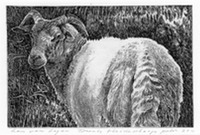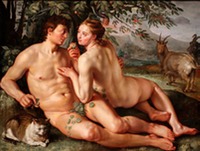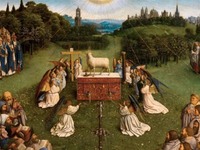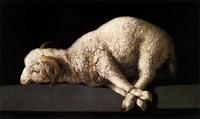sheep in ruurlo
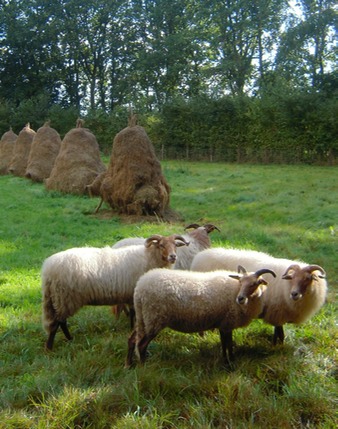
Since a few weeks four sheep are grazing in the meadow next to my house. The sheep are heathland sheep from Drente (Northern part of Holland). It is the eldest sheep race of Europe. They are rather small and slender but proud, hardened and watchful animals. In the past farmers kept the sheep to keep the heather fields short and used their manure as fertilizer. After the introduction of chemical fertilizer the race became almost extinct. Nowadays they are used for the conservation of nature. My sheep belonged to a herd in Drente. They are white ewes with beautiful curled horns on light or dark brown heads. They are curious and sometimes naughty. My self-made hay stacks did not survive their presence. In the beginning they decently nibbled of the hay stacks but soon two of them were destroyed completely.
In 1604 Karel van Mander published "Het schilder-boeck" (The book of painting ) a classical handbook for painters. In this book van Mander gives a elaborate description of the symbolic meaning of animals. At that time painters used the symbolic meaning of animals to reinforce the message of the painting. For instance , the goat was a symbol of overindulgence, lack in restraint. On the painting " Fall of man" made by Hendrick Goltzius you see at the right side two goats watching watching Adam and Eve with the apple. The sheep is also mentioned in Karel van Manders handbook. At that time the female sheep was a symbool of ignorance, stupidness and foolishness. The lamb was associated with innocence and meekness. The symbolic of the lamb inspired many Christian painters. A perfect example is The lamb of God made by the Flemish brothers van Eyk. The Agnus Dei made by Francisco de Zurbaran is another example. When I observe my heather sheep I have some doubts about the 17th century symbolism of animals. My two year old ewes are very smart, investigating animals each with her own personality. The youngest, born in Spring this year, so technically a lamb, is quite an assertive animal during feeding time and far away from the innocence and meekness of the Lamb of God.
